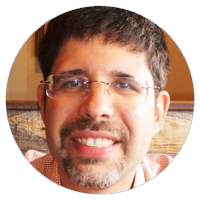Simul8 in South America: Impactful simulation models from our Brazilian channel partner
![]() Simul8 / Nov 2, 2023
Simul8 / Nov 2, 2023
At Simul8, we work with many global partners who champion our software and help organizations of all shapes and sizes improve their decision-making processes.
Simulate Simulation Technology is a Brazilian consultancy and a Simul8 channel partner. They are focused on developing discrete event simulation models and providing simulation training to users in South America. They have used Simul8’s software for over 20 years and has created more than 200 models for businesses across sectors, including manufacturing, healthcare, aerospace, logistics, and transportation.
An Interview with Leonardo Chwif
Simulate Simulation Technology CEO

We caught up with Leonardo Chwif to discuss what makes his organization’s work impactful and his thoughts on the future of simulation.
You recently authored an academic paper about some of the most significant simulation models your company has created. Please tell us more about this.
Through our work with Simul8, we have developed a deep understanding of their technology and have worked on hundreds of simulation projects across many sectors. The most impactful are those that deliver financial, tangible, or even intangible benefits. The paper focuses on four models across manufacturing, logistics, healthcare, and transportation that fit these criteria. It demonstrates that although some of the models we create appear simple, they offer very impactful real-world results.
Why did you choose to include these examples in your paper?
We chose to include models that show the full scope of simulation modeling. For example, our work with an eye clinic is considered impactful because we reduced waiting times, which enabled more patients to be seen and lowered the chances of someone losing their sight.
In comparison, the logistics model is impactful because, within two years of using the simulation daily, the company saw an increase in productivity and a reduction in issues relating to a lack of resources. The result was improved profit margins and increased customer satisfaction.
Are there any limitations to the models? Can they scale to fit any amount of data?
There are no limits in terms of scope. It all depends on the complexity of each model. There are many variables and interactions to consider. For example, one model may take a week to create, whereas another could take up to four or five months to develop. In theory, the software has no limitations and can model a system of any size, but I prefer to work with less complex models as the results are easier to verify.
One example uses simulation modeling to identify sustainable transport routes. How do you see simulation software contributing to sustainability efforts in the future?
Sustainability is a hot topic, and organizations from every sector are looking at ways to reduce their carbon footprint. The simulation community is no different, and we’re exploring how we can support this process. For example, when building a model, we can factor in carbon emissions thanks to Simul8’s emissions calculator. In the future, I think we’ll see more organizations wanting to incorporate this into their simulations, especially with the rise of smart cities and urban planners wanting to monitor mobility.
Is there a particular sector you believe would benefit from an increased use of simulation software?
In Brazil, simulation is mainly used in manufacturing and logistics. I’d like to see it applied more in healthcare. Unlike the UK, where there is significant investment in infrastructure, in Brazil, it’s not so easily applicable. If healthcare leaders understood the benefits of embracing simulation software, I think they’d be open to using it. Attitudes towards using technology in healthcare are changing here, which is a positive as I see it as an opportunity for growth in the future.
In the 20 years you’ve worked with simulation software, how has it changed, and what do you think the future holds?
The most significant change has been the technology. It’s become so sophisticated and allowed us to do so much, but it’s also had a negative impact. Smartphones have become so advanced that people no longer want to think to find solutions. The emergence of artificial intelligence means some tools answer people’s questions immediately and remove more in-depth thought from the process.
Before we build a model, a great deal of deep thinking is required. It’s this level of planning that enables us to deploy the software quickly and deliver results for our customers. Our focus for the future should be to find a way to combine these tools to get the best out of simulation.
Leonardo will be presenting his paper at the Winter Simulation Conference 2023 (December 10 – 13 in San Antonio, Texas) as part of the Simulation Around the World track, with his paper due to be published thereafter.
Leonardo Chwif graduated in Mechanical Engineering (Mechatronics Specialization) in 1992 at the University of São Paulo and received his M.Sc. degree in 1994 and his Ph.D. in Simulation in 1999 from the same University. Currently he is CEO of Simulate Simulation Technology, where he has conducted more than 200 simulation projects and taught more than 1,000 people in Simulation Theory and Simulation Software (Simul8). Dr. Chwif also currently teaches introductory graduate simulation courses at Maua School of Engineering and FEI.